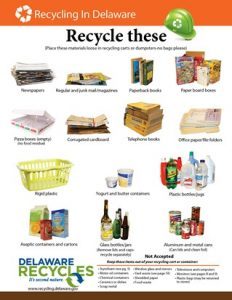HARRINGTON – More than 100 Delaware middle school students, teachers and volunteers from across Delaware came together today for Delaware’s 22nd Annual Junior Solar Sprint, a competition in which students build and race solar-powered model cars. DNREC’s Division of Energy & Climate partnered with the Delaware Technology Student Association to organize this year’s event at the Delaware State Fairgrounds in Harrington.
Over the past few months, the student racing teams have worked with classmates and teacher advisors to build model cars powered by solar photovoltaic cells, or solar panels. Today, the sun-driven racers competed for top speed in time trials, as well as for awards in engineering and creative design.
“Solar photovoltaic technology allows us to harness the abundant energy from the sun for a clean, lasting power source,” said DNREC Deputy Secretary Kara Coats. “Students may use solar power every day without realizing it, in objects like watches and calculators. Junior Solar Sprint challenges students to think about ways solar energy can play a larger role in our lives by providing electricity for transportation and buildings. Watching young people working in teams and using technology is very rewarding but this isn’t just a fun competition, it is readying a new generation to take control of their future.”
“Solar photovoltaic capacity in Delaware has grown almost 3,000 percent since 2008, from 2.3 MW capacity to 71.8 MW capacity. Solar and other forms of clean energy allow Delawareans to achieve the quality of life they desire while reducing greenhouse gas emissions and protecting our environment,” Deputy Secretary Coats added.
The Junior Solar Sprint competition is part of a national program geared toward environmental awareness and sponsored by the U.S. Army Educational Outreach Program. It encourages students to engage in problem-solving, teamwork and creative scientific thinking to solve environmental challenges.
At this year’s Junior Solar Sprint, participating schools were: Beacon Middle School, Lewes; Milford Central Academy, Milford; Postlethwait Middle School, Camden; Holy Cross Middle School, Dover; Gauger-Cobbs Middle School, Newark; H.B. DuPont Middle School, Hockessin; Sanford School, Hockessin; and Springer Middle School, Wilmington.
Race Results
The top five teams in time-trial races were:
- First place: Sanford School, Car #16
- Second place: Sanford School, Car #17
- Third place: Holy Cross Middle School, Car #8
- Fourth place: Springer Middle School, Car #20
- Fifth place: Springer Middle School, Car #21
The top five teams in design were:
- First place: Springer Middle School, Car #21
- Second place: Springer Middle School, Car #20
- Third place: Holy Cross Middle School, Car #8
- Fourth place: H.B. DuPont Middle School, Car #5
- Fifth place: Postlethwait Middle School, Car #14
About Solar Photovoltaic Energy in Delaware
Solar technologies and other renewable energy technologies reduce our country’s reliance on foreign oil, and provide a clean and infinite source of energy to meet growing demands while minimizing risks to resources and human contributions to climate change. In addition, a growing solar industry stimulates Delaware’s economy by creating jobs in solar products manufacturing and installation.
For more information on renewable energy programs administered by the Delaware Division of Energy & Climate, visit www.energy.dnrec.delaware.gov.
Media Contact: Joanna Wilson, DNREC Public Affairs, 302-739-9902
Vol. 46, No. 126

